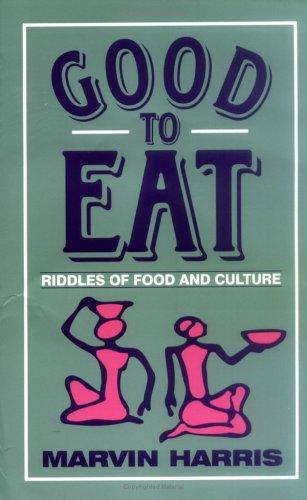Tapa blanda, 289 páginas
Idioma English
Publicado el 8 de julio de 1998 por Waveland Press.

Tapa blanda, 289 páginas
Idioma English
Publicado el 8 de julio de 1998 por Waveland Press.
Why are human food habits so diverse? Why do Americans recoil at the thought of dog meat? Jews and Moslems, pork? Hindus, beef? Why do Asians abhor milk? In Good to Eat, bestselling author Marvin Harris leads readers on an informative detective adventure to solve the world's major food puzzles. He explains the diversity of the world's gastronomic customs, demonstrating that what appear at first glance to be irrational food tastes turn out really to have been shaped by practical, or economic, or political necessity. In addition, his smart and spirited treatment sheds wisdom on such topics as why there has been an explosion in fast food, why history indicates that it's "bad" to eat people but "good" to kill them, and why children universally reject spinach. Good to Eat is more than an intellectual adventure in food for thought. It is a highly readable, scientifically accurate, and fascinating …
Why are human food habits so diverse? Why do Americans recoil at the thought of dog meat? Jews and Moslems, pork? Hindus, beef? Why do Asians abhor milk? In Good to Eat, bestselling author Marvin Harris leads readers on an informative detective adventure to solve the world's major food puzzles. He explains the diversity of the world's gastronomic customs, demonstrating that what appear at first glance to be irrational food tastes turn out really to have been shaped by practical, or economic, or political necessity. In addition, his smart and spirited treatment sheds wisdom on such topics as why there has been an explosion in fast food, why history indicates that it's "bad" to eat people but "good" to kill them, and why children universally reject spinach. Good to Eat is more than an intellectual adventure in food for thought. It is a highly readable, scientifically accurate, and fascinating work that demystifies the causes of myriad human cultural differences.